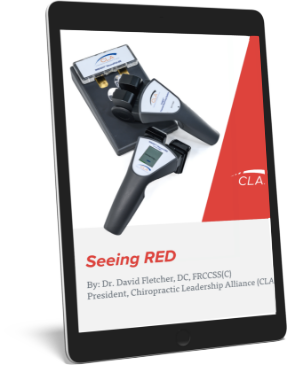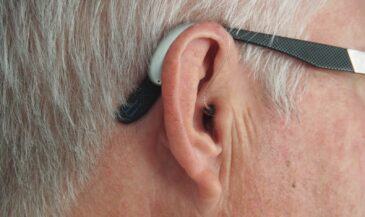By Dr. Christopher Kent
The creativity of some state boards staggers the imagination. It is not uncommon for boards to implement a political agenda to promote, suppress, or mandate a given approach to practice, depending on who holds the votes. Some boards have attempted to promulgate regulations which expand the scope of chiropractic practice far beyond what may have been envisioned by the legislature. For sheer audacity, it’s hard to beat Colorado’s recent efforts. [1]
Rule 7 addresses scope of practice. The version effective February 1, 2003, stated, in part:
“A. Practices which are not within the scope of chiropractic practice and invoke the duty to refer provision in Section 1233117 (1)(bb) C.R.S. include, but are not limited to:
5. Prescription of drugs.”
Yet the version effective February 1, 2005, contains a twist that not only permits DCs to prescribe and administer drugs, but to actually compound them. Provision 5 now reads as follows:
“5. Prescription drugs not referenced in Rule 7 C.”
Yep. Prescription drugs referenced in Rule 7 C are apparently fair game, as are OTCs. This clever maneuver was done by extending the definition of nutritional measures provided in the statute:
“C. Nutritional Remedial Measures as referenced in Section 1233102 (1), C.R.S. means that a doctor of chiropractic may administer, prescribe, recommend, compound, sell and distribute homeopathic and botanical medicines, vitamins, minerals, phytonutrients, antioxidants, enzymes, glandular extracts, nonprescription drugs, durable and nondurable medical goods and devices.”
It is ironic that the folks who profess to be “protecting the public” have opened the door to prescribing “homeopathic and botanical medicines” and even including in their definition of nutritional remedial measures “durable and nondurable medical goods and devices.”
I’d love to see how many of the “medicines” permitted under this rule would comply with the requirements of Colorado Board Rule 9. How many homeopathic and botanical medicines are “supported by a body of evidence using standard scientific research methodology” as required by Rule 9? How many CCEaccredited chiropractic colleges teach pharmaceutical compounding, a procedure generally reserved for registered pharmacists? Have these homeopathic and botanical medicines demonstrated a body of evidence “based upon anatomical, physiological and/or structural relationships which can be verified through standard diagnostic procedures” as required by Rule 9 (B) (2)?
Nope. This has nothing to do with science, evidencebased practice, or protecting the public. It is a political, not a scientific decision that we are dealing with, that defines a crutch or a drug as a “nutritional” measure, and opens the door to prescribing over the counter drugs, including everything from jock itch spray to cough syrup.
Where did this come from? One strong possibility is that it is designed to promote the agenda of the American Academy of Chiropractic Physicians (AACP). The chairperson of their 36 hour “advanced practice of chiropractic medicine” course happens to be a member of the Colorado Board. Yes, in just 36 hours, you can submit your credentials and application for “Advanced Practice in Chiropractic Medicine Certification (APCMC). [2] The AACP web site lists 21 members in the State of Colorado. [3]
What is their vision for chiropractic? Here is the first of their tenets:
“AACP promotes the concept that doctors of chiropractic are physicians who practice outcomes based primary care chiropractic medicine, emphasizing the use of a wide variety of treatment measures that are generally viewed as conservative treatment interventions. These include, but are not limited to, physiological therapeutics, therapeutic exercise, botanical, nutritional, and homeopathic medicines, articular manipulation and other medicines and therapeutics.”
Permitting drugs in chiropractic is one thing. However, the other side of the coin is to promote rules which could longterm wellness care. The Colorado Board is holding a hearing to promulgate a new Rule 26. There are many disturbing provisions in this rule, but the most disturbing part is 5(e) which states, in part, “The doctor’s duty includes the following: e. Discharging the patient for the presenting episode, after being placed at maximum chiropractic or medical improvement.”
As written, it would mandate “discharging” a patient , “after being placed at maximum chiropractic or medical improvement.”
This would deny chiropractic care to asymptomatic patients and those whose condition, while having reached maximal clinical improvement, would deteriorate without continuing care.
For many, chiropractic care is part of a healthy lifestyle. It is not limited to the episodic treatment of identifiable conditions or symptoms. There is a growing body of evidence that wellness care provided by doctors of chiropractic may reduce health care costs, improve health behaviors, and enhance patient perceived quality of life. [4,5,6,7]
What is your vision of chiropractic? Will your state be next? Take the time to monitor the activities of your regulatory agency. Make them obey their own rules. Exercise any right you may have to present oral or written testimony. As Wendell Phillips wrote, “Eternal vigilance is the price of liberty.”
And if you’re in Colorado and need more fiber, eat a crutch.
References
1. http://www.dora.state.co.us/chiropractic/
2. http://www.nuhs.edu/postgrad/pdfs/Advanced%20Practice.pdf
3. http://www.aacp.net/
4. Blanks RHI, Schuster TL, Dobson M: “A retrospective assessment of Network care using a survey of selfreported health, wellness and quality of life.” Journal of Vertebral Subluxation Research (JVSR) 1997;1(4):15.
5. Coulter ID, Hurwitz EL, Aronow HU, et al: “Chiropractic patients in a comprehensive homebased geriatric assessment, followup and health promotion program.” Topics in Clinical Chiropractic 1996;3(2):46.
6. Rupert RL, Manello D, Sandefur R: “Maintenance care: health promotion services administered to US chiropractic patients aged 65 or older, Part II.” Journal of Manipulative and Physiological Therapeutics 2000;23(1):10.
7. Campbell CJ, Kent C, Banne A, et al: Surrogate indication of DNA repair in serum after longterm chiropractic intervention: a retrospective study. JVSR; February 18, 2005:1






























































































































































